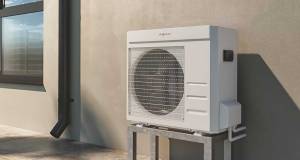Energy Auditing

A new directive has been passed into Irish and European law that is set to place unprecedented demands on the energy performance of virtually all buildings in Ireland. EU Directive 2002/91/EC on the Energy Performance of Buildings, which must be implemented by 4th January 2006, will lead to energy efficiency becoming an integral design concern for virtually every category of building, and is destined to convert a building’s energy performance into a factor that significantly effects its value.
One aspect of the directive that is destined to turn a building’s energy performance, and subsequent running costs, into a central concern for prospective buyers and tenants, is the introduction of energy auditing across the board. Under the terms of the directive, for almost all buildings, an energy performance certificate, or energy rating, which may include a CO2 indicator, is to be supplied by the owner to any prospective buyers or tenants when sold or rented. A knock on effect that seems destined to occur is that the introduction of energy auditing will result in prospective buyers or tenants being presented with clear, objective facts on the building’s energy performance, and will be able to surmise from this what their heating bills might be.
The directive comes with a recognition that the energy auditing of a building should include consideration of a broad range of systems that can lead towards lower energy consumption. It is stressed in the Directive that ‘the energy performance of a building should be calculated on the basis of a methodology, […] that includes, in addition to thermal insulation other factors that play an increasingly important role such as heating and air-conditioning installations, applications of renewable energy sources and design of the building’. The directive continues that a common approach in this regard across the member states ‘will introduce transparency for prospective owners or users with regard to the energy performance in the Community property market’.
The directive has been welcomed by senior figures in the various sectors geared towards increasing energy efficiency in buildings, such as the renewable energy, insulation and timber frame sectors. As Gerard Berney of the Irish Solar Energy Association states, ‘This for us is a directive which is basically telling the truth to people about how they use energy’. The fact that solar energy, amongst other progressive technologies, will become an increasingly attractive option to consumers is something Berney is keenly aware of. ‘We think that this is the sort of directive that will provide a level playing field in which solar energy can compete against fossil fuels which are indirectly subsidised in a totally unfair way’, he continues.
Another key point in the directive, which is being implemented by the Department of Environment and Local Government, the Department of Marine and Natural Resources, and Sustainable Energy Ireland (SEI), places particular stress on public buildings to take additional measures. It is stated that ‘public authority buildings and buildings frequently visited by the public should set an example by taking environmental and energy considerations into account and therefore should be subject to energy certification on a regular basis’.
Jeff Colley spoke to Mr. Tom Kennington, Principal Officer dealing with the Energy Directive in Department of Communications, Marine and Natural Resources.
What impact do you think this Directive will have on how buildings are built in Ireland?
The Directive will have limited impact on new building construction as it does not prescribe new or tighter standards compared to those already in the Building Regulations. Part L of the Building Regulations deals with energy use in buildings. Insofar as it deals with housing, it has been updated and tightened with effect from 1st January 2003. It is proposed to similarly update and tighten requirements for buildings other than dwellings in proposals to be issued for consultation in early 2004. The Directive requires that all buildings for sale or rent be provided with an energy performance certificate. It may be that some developers will see a commercial advantage in going beyond the requirements of Regulations. The better energy performance will be reflected in the Energy Certificate and this may be seen to provide a marketing advantage.
Do you think it will alert more people in the construction industry to the economic benefits of energy efficiency in design?
The existence of the certificate should alert both people in the industry and, possibly more importantly, clients of the industry that there is scope to improve energy efficiency beyond that required to meet Regulations, and thus reduce energy costs associated with the operation of buildings. For purchasers and renters, it will also highlight the difference in energy efficiency between older less energy efficient buildings and newer buildings complying with modern tighter energy efficiency Regulations
Do you think it will raise the effect a building's energy
performance will typically have on its value?
A primary aim of the Directive is to make energy performance of a building transparent and available to potential purchasers or tenants. The availability of this information may influence the market.
Is this a concern developers, architects and builders should be
integrating into projects now?
Energy performance is an issue which has been highlighted over a number of years, particularly in the context of implementing the National Climate Change strategy and meeting national targets relating to CO2 emissions. This has resulted in amendments to statutory energy performance requirements under Part L of the national Building Regulations, as already outlined. As such, this has already become an issue for developers, architects and builders and has received greater attention during project development and design.
It is important to realise that, when in force, the Directive will apply to existing as well as new buildings. Thus, the fact that the Directive has not yet come into force does not mean that buildings now being constructed will not have to provide an energy certificate when being sold or rented after the Directive comes into force.
What categories of people could potentially carry out the auditing?
Proposals as to the nature and content of audits and of the qualifications of those permitted to carry out audits will be developed over the next 12 months or so.

With a specific regard for the implementation of this Directive in Ireland, Kevin O’Rourke of Sustainable Energy Ireland has prepared a breakdown of the main points of relevance:
Context of the directive
Arising from the Kyoto protocol, the EU has set the reduction of greenhouse gas emissions as an important objective. The most significant greenhouse gas is CO2, almost half of which derives from energy use in buildings. EU research has indicated that CO2 emissions from buildings could be reduced by 22% through improving energy efficiency. In 2000, the European Commission's Action Plan on Energy Efficiency indicated the need for specific measures in the building sector.
In response, the Commission published the proposed Directive on The Energy Performance of Buildings in May 2001. The European Parliament and Council signed the agreed text of the directive at the Energy Council on 25th November 2002. Upon its publication in the EU Official Journal on 4th January 2003, the directive is now European Law.
The directive’s main objectives are to promote:
• improved energy performance of buildings within the EU through cost effective measures;
• the convergence of building energy standards towards those of member states which already have ambitious levels.
Scope of the directive
The directive will apply to almost all buildings, residential and non-residential, both new and existing. Member states are allowed to exempt certain categories of buildings, such as buildings of historical or architectural importance, religious buildings, and buildings of low occupancy or size.<
Requirements of the directive
The main provisions of the Directive are as follows:
• It sets out a common framework methodology for calculating the energy performance of buildings;
• It sets minimum energy performance standards (both for new build and major refurbishment) based upon the agreed methodology, to be reviewed regularly;
• For new buildings over 1000m2, the feasibility of alternative energy measures is to be considered;
• For buildings over 1000m2 undergoing renovation, energy performance is to be upgraded as far as is technically, functionally and economically feasible;
• For almost all buildings, an energy performance certificate (or energy rating) is to be supplied by the owner to a prospective buyer or tenant when sold or rented. This certificate may include a CO2 indicator;
• The Certificate is to be accompanied by recommendations for cost-effective improvements to energy performance;
• For buildings of over 1000m2 and “used by the public” an energy certificate is to be posted in a prominent place;
• Regular boiler inspection requirements apply for particular classes of boiler or provision of advice on best practice in boiler use and replacement;
• Similarly for air-conditioning systems;
• Measures are to be taken to provide of information on heating systems and best use of energy in buildings.
In relation to the methodology the Commission draws attention to the existing standards documents EN 832 and prEN ISO 13790 which will be developed further.
Probably the best-known requirement is the mandatory provision of energy certificates to prospective buyers or tenants. Such a concept of “energy rating” in the housing sector was already scheduled in Sustainable Energy Ireland’s work programme and in the government’s National Climate Change Strategy. However, it will be seen that the scope of the directive is considerably wider.
Timing for Implementation
The directive must be implemented by member states no later than 4th January 2006. However, member states have the option of an additional 3 year period to apply the provisions on energy performance certificates (for both residential and non-residential sectors), inspection of boilers and inspection of air conditioning systems. This is to allow time to develop suitable energy rating systems and certification schemes for buildings within the scope of the directive, as well as accreditation and training of sufficient personnel to undertake the energy performance assessments and equipment and systems inspections.
The Department of the Environment & Local Government will take the lead for legislatively implementing the measures contained within the Directive, in conjunction with the Department for Communications, Marine & Natural Resources, supported by Sustainable Energy Ireland.
- EU Directive 2002/91/EC
- energy performance
- energy efficiency
- energy auditing
- sustainable energy
- lower energy consumption
- Energy Performance of Buildings
- sustainable energy in ireland
Related items
-
Energising Efficiency
-
 Major new grants for retrofit & insulation announced
Major new grants for retrofit & insulation announced -
 International passive house conference kicks off
International passive house conference kicks off -
 Grant launches online learning academy
Grant launches online learning academy -
 We can launch a new eco renaissance
We can launch a new eco renaissance -
 Towards greener homes — the role of green finance
Towards greener homes — the role of green finance -
 Viessmann launches new compact heat pump
Viessmann launches new compact heat pump -
 New issue of Passive House Plus free to read
New issue of Passive House Plus free to read -
 Saint Gobain launches online technical academy
Saint Gobain launches online technical academy -
 SEAI Energy Awards 2020 open for entries
SEAI Energy Awards 2020 open for entries -
 An Post to enter retrofit market
An Post to enter retrofit market -
 The first oil crisis
The first oil crisis

